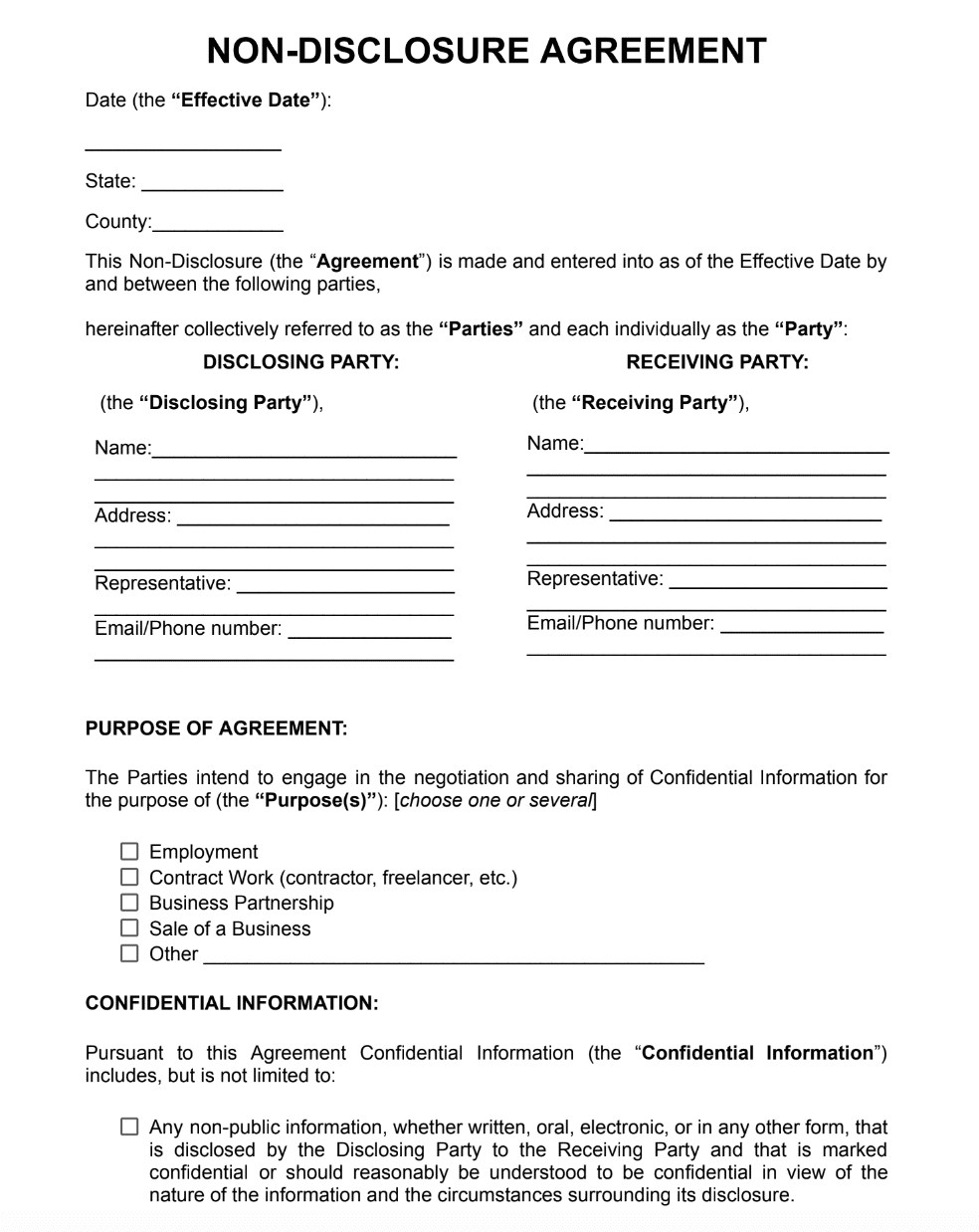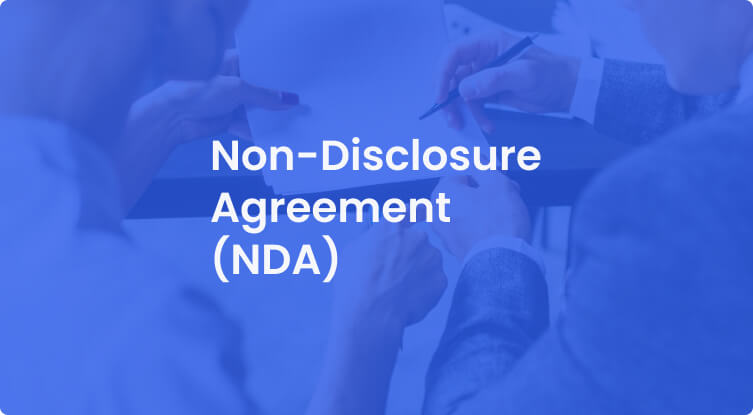When to Use a Non-Disclosure Agreement (NDA)
An NDA contract is usually employed to protect trade secrets exchanged between the parties during their discussions. Typical situations include:
- When establishing a new business partnership;
- When disclosing confidential information to prospective partners or investors;
- Before introducing a new technology or product to a prospective consumer or client;
- When employees or contractors have access to private data while they are engaged in their job or employment.
Types of Non-Disclosure Agreement (NDA)
There are two main types of NDA templates, each suitable for different situations:
- Unilateral NDA: This type is used when just one party discloses private information to another, and the recipient consents to keep it secret. For instance, an employer-employee relationship or a company disclosing sensitive information to a vendor or potential investor.
- Bilateral or mutual NDA: This non-disclosure form is utilized when two parties exchange private information that needs to be kept private. It is frequently employed in partnerships or innovations when all participants work together and exchange confidential information.
It is crucial to comprehend the difference between these types, as the choice of an appropriate free non-disclosure agreement will be dependent on particular situations, involved parties, and the nature of the data that must be disclosed.
Terms and Parties of a Non-Disclosure Agreement (NDA)
The two primary parties in a non-disclosure agreement template are the receiving party, which agrees to keep the information secret, and the disclosing party, which provides confidential information.
Important elements of a generic NDA include the following:
- Confidential information: This is a description of the information that must be kept secret by the party that receives it. This might include client names, business strategies, secret technologies, data lists, etc.
- Obligations of the receiving party: Specific responsibilities that the receiving party must fulfill to protect and guarantee the confidentiality of the information, such as refraining from using or disclosing it for purposes that have not been previously agreed upon in the non-disclosure agreement.
- Term: Indicates how long the receiving party must maintain the confidentiality of the information. This could change or even go beyond the termination of the relationship between both parties.
- Exceptions: A detailed description of particular circumstances in which the receiving party can release private information. Examples of this would be in situations where it is mandated by law or with the disclosing party’s written consent.
- Penalties for violation: Outlines any potential consequences or losses that might happen in the event that the receiving party violates their confidentiality obligations.
This approach guarantees that the NDA agreement template is thorough, practical, and legally sound, providing strong protection of confidential information.
How to Create a Non-Disclosure Agreement (NDA)
Get started creating a non-disclosure agreement form by following this guide:
- Identify the parties: Clearly specify the disclosing and receiving parties and include their personal or company information.
- Define the confidential information: Indicate the kinds of data that are regarded as private. This can apply to any inventions, business plans, procedures, financial data, etc.
- Set the obligations: Clearly state the receiving party’s responsibilities and limitations with regard to managing and utilizing sensitive information.
- Establish the term: Determine the period for which the data must be kept confidential.
- Account for exceptions: Define the cases in which the receiving party might be released from the duty to keep confidentiality.
- Legal review: It is generally advisable to have a free NDA template reviewed by a lawyer to ensure its legal validity and effectiveness.
- Signatures: Signing the agreement or free NDA template is the last stage in ensuring that all parties have acknowledged and understood it, formally making it legally enforceable.
If you want to prevent unauthorized exposure of private information, employing an NDA template free of charge would be practical.
Such templates provide a structured format with all the required clauses, thereby ensuring that the finalized document will meet the legal requirements. A free non-disclosure agreement template may give your company an extra degree of legal protection, whether you need to assure secrecy in employment contracts or communicate secret information with possible partners.
 Preview
Preview

 Preview
Preview
